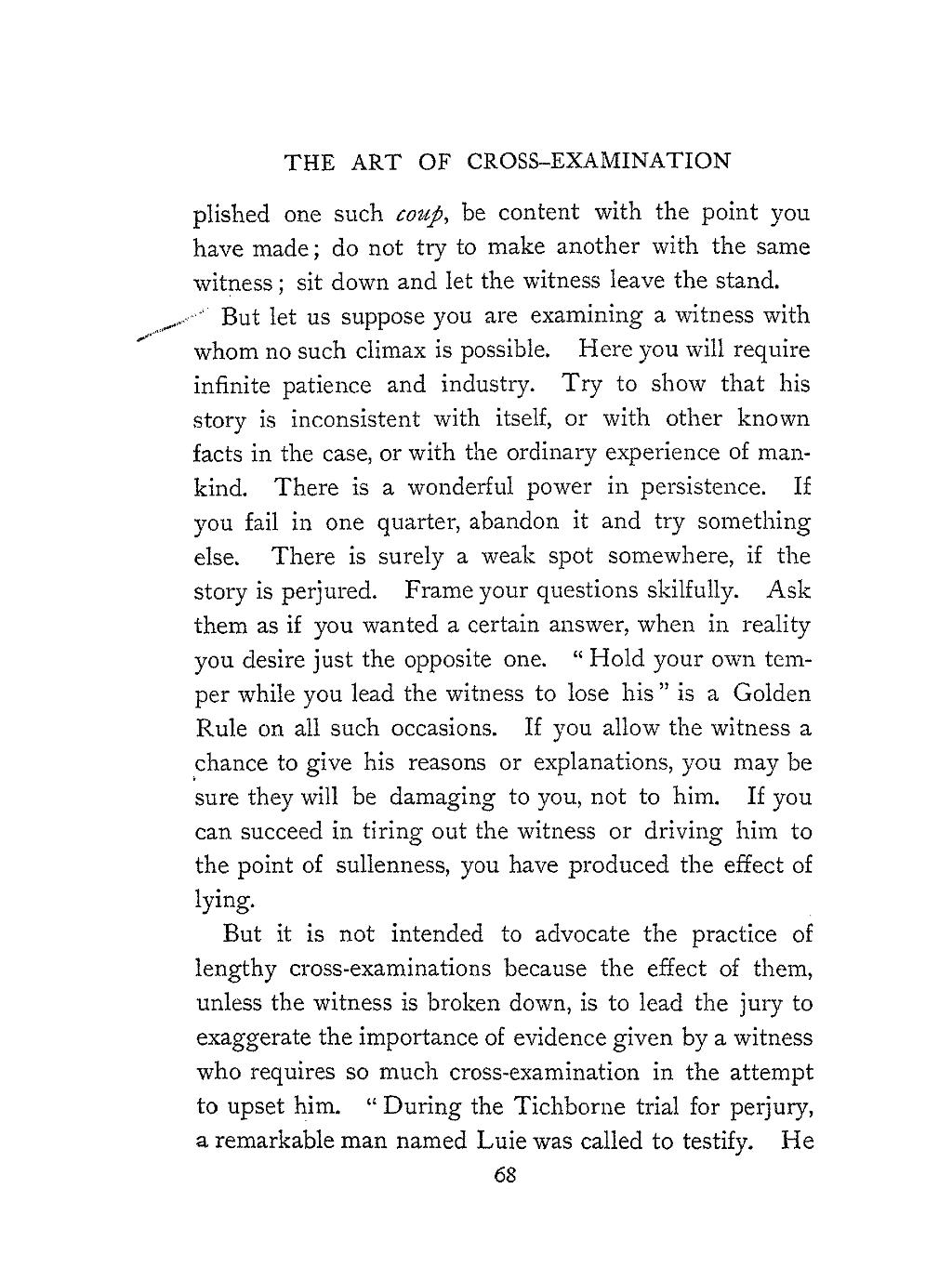THE ART OF CROSS-EXAMINATION
plished one such coup, be content with the point you have made; do not try to make another with the same witness; sit down and let the witness leave the stand.
But let us suppose you are examining a witness with whom no such climax is possible. Here you will require infinite patience and industry. Try to show that his story is inconsistent with itself, or with other known facts in the case, or with the ordinary experience of mankind. There is a wonderful power in persistence. If you fail in one quarter, abandon it and try something else. There is surely a weak spot somewhere, if the story is perjured. Frame your questions skilfully. Ask them as if you wanted a certain answer, when in reality you desire just the opposite one. "Hold your own temper while you lead the witness to lose his" is a Golden Rule on all such occasions. If you allow the witness a chance to give his reasons or explanations, you may be sure they will be damaging to you, not to him. If you can succeed in tiring out the witness or driving him to the point of sullenness, you have produced the effect of lying.
But it is not intended to advocate the practice of lengthy cross-examinations because the effect of them, unless the witness is broken down, is to lead the jury to exaggerate the importance of evidence given by a witness who requires so much cross-examination in the attempt to upset him. "During the Tichborne trial for perjury, a remarkable man named Luie was called to testify. He
68
